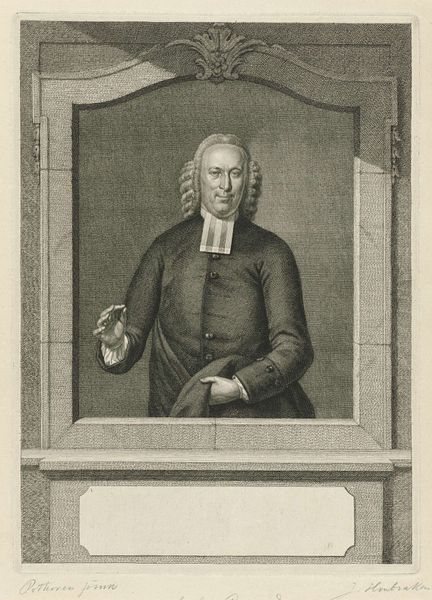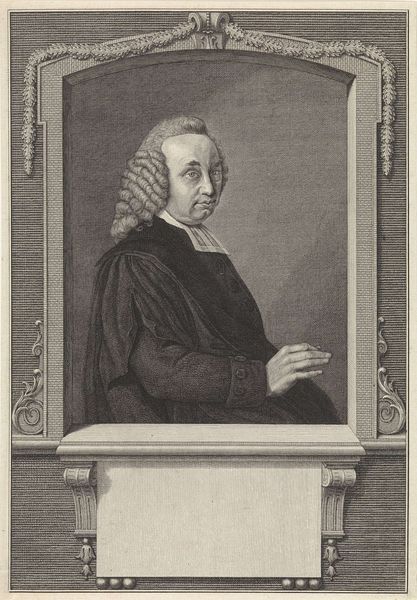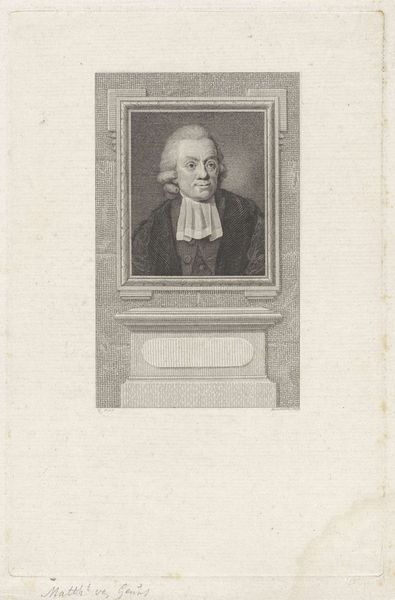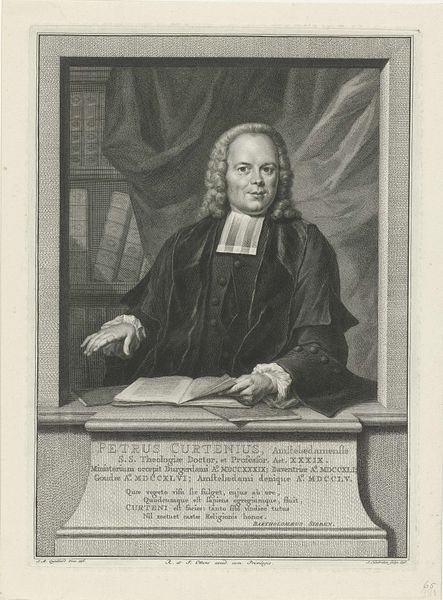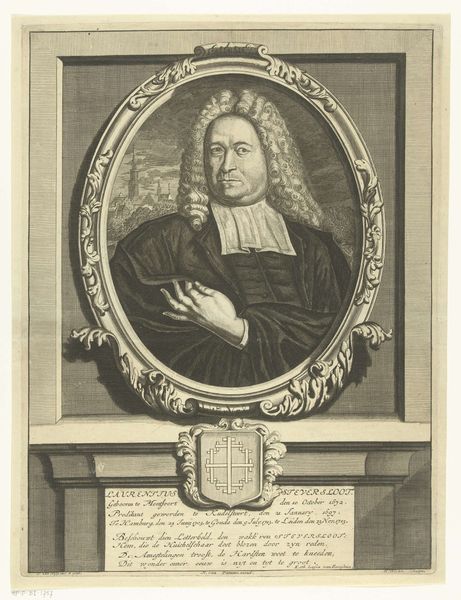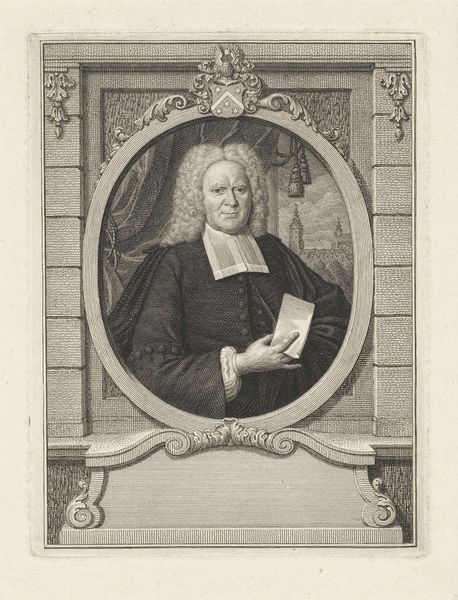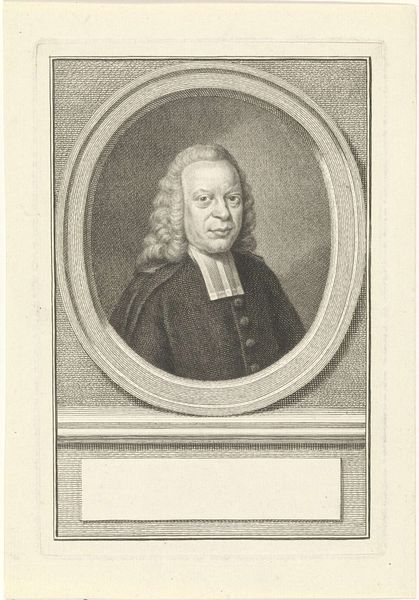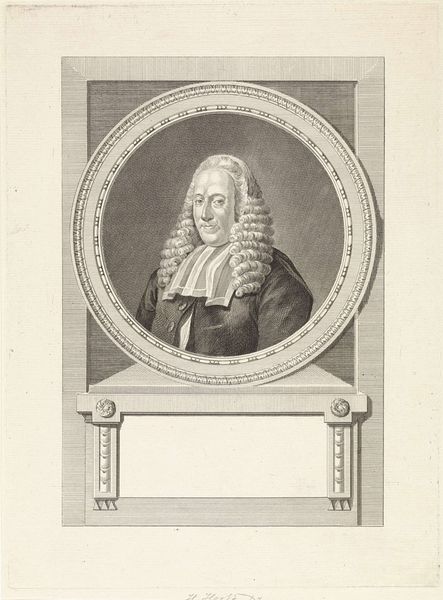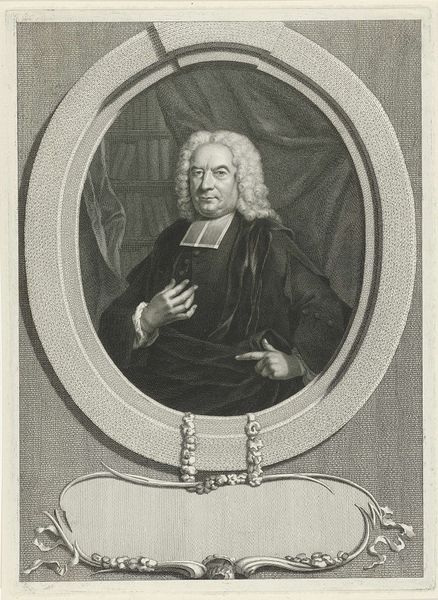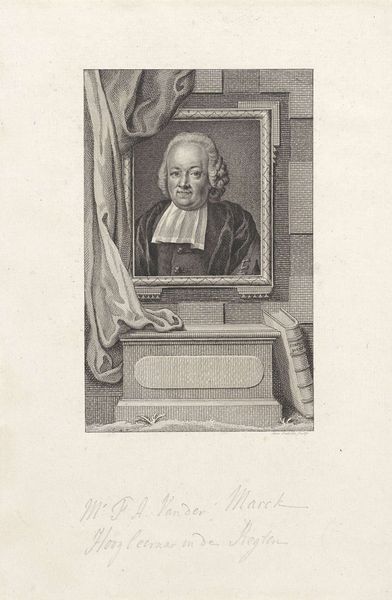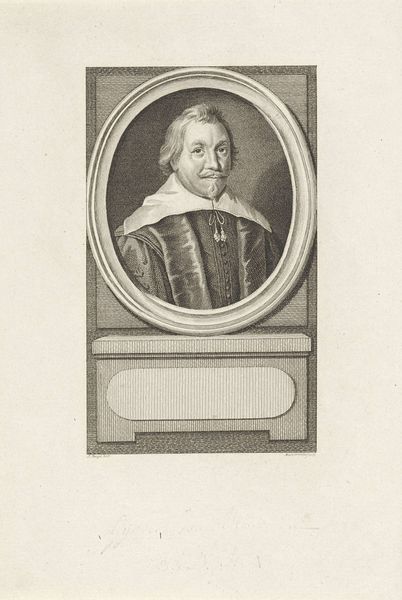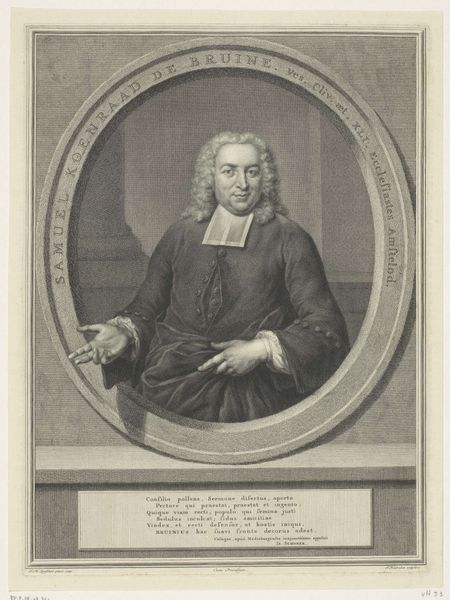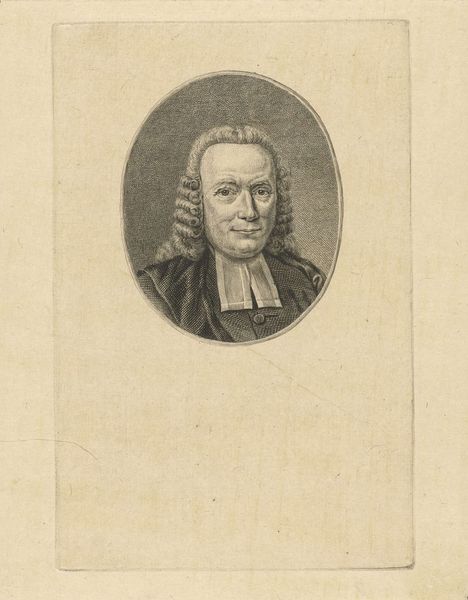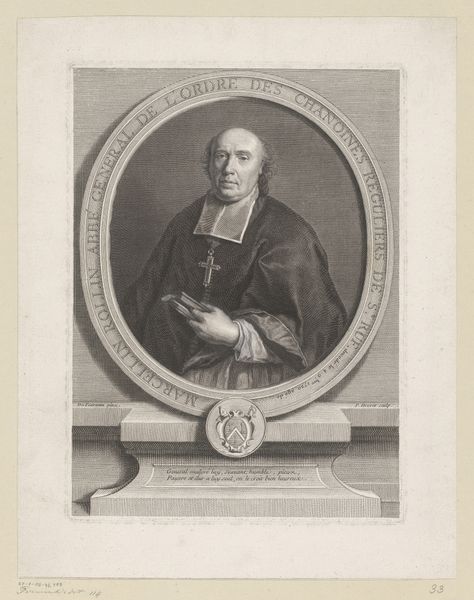
Dimensions: height 331 mm, width 248 mm
Copyright: Rijks Museum: Open Domain
Editor: This is Jacob Houbraken's "Portret van Leonard Offerhaus op 75-jarige leeftijd," created around 1774-1775. It’s an engraving on paper. What strikes me is how it's framed like a window or a stage – almost theatrical. What do you make of it? Curator: It’s certainly staged, isn’t it? Look at the institutional framing. The portrait's setting and the subject’s garments – the scholarly robe, the book he holds – signal Offerhaus's status. He wasn’t just anyone; portraying him this way reinforced his social standing. How does that resonate with you? Editor: It feels…deliberate. Almost like an advertisement for being learned. Was portraiture often used in that way? Curator: Absolutely. Think about the power dynamics at play. Houbraken, the artist, is commissioned to create an image that elevates Offerhaus, a respected scholar, further solidifying his place in society. The printing process allows for wider distribution, effectively creating a public monument to his intellect. Did many people have access to see such a piece at that time? Editor: Probably only those who could afford it, or who visited specific institutions like libraries or universities, right? Curator: Precisely. These images circulated within specific social and intellectual circles, reinforcing existing hierarchies. The books behind him, the somber colors...everything points to learnedness and status. So what, would you say, is its overall public role at that time? Editor: It would serve as propaganda and to reinforce hierarchies for certain groups within society and reinforce what the institution thinks is valuable, or important. I suppose, now, its public role is in remembering a notable figure from the past and it is open to anyone who visits or sees this engraving. Curator: Indeed. And reflecting on that shift allows us to see how art functions as a social mirror, reflecting – and sometimes shaping – the values of its time. Editor: It’s interesting how an image can be so carefully constructed to convey such specific ideas, even centuries later! Curator: Yes! And it's the careful construction that holds so many historical narratives within its lines and composition.
Comments
No comments
Be the first to comment and join the conversation on the ultimate creative platform.
